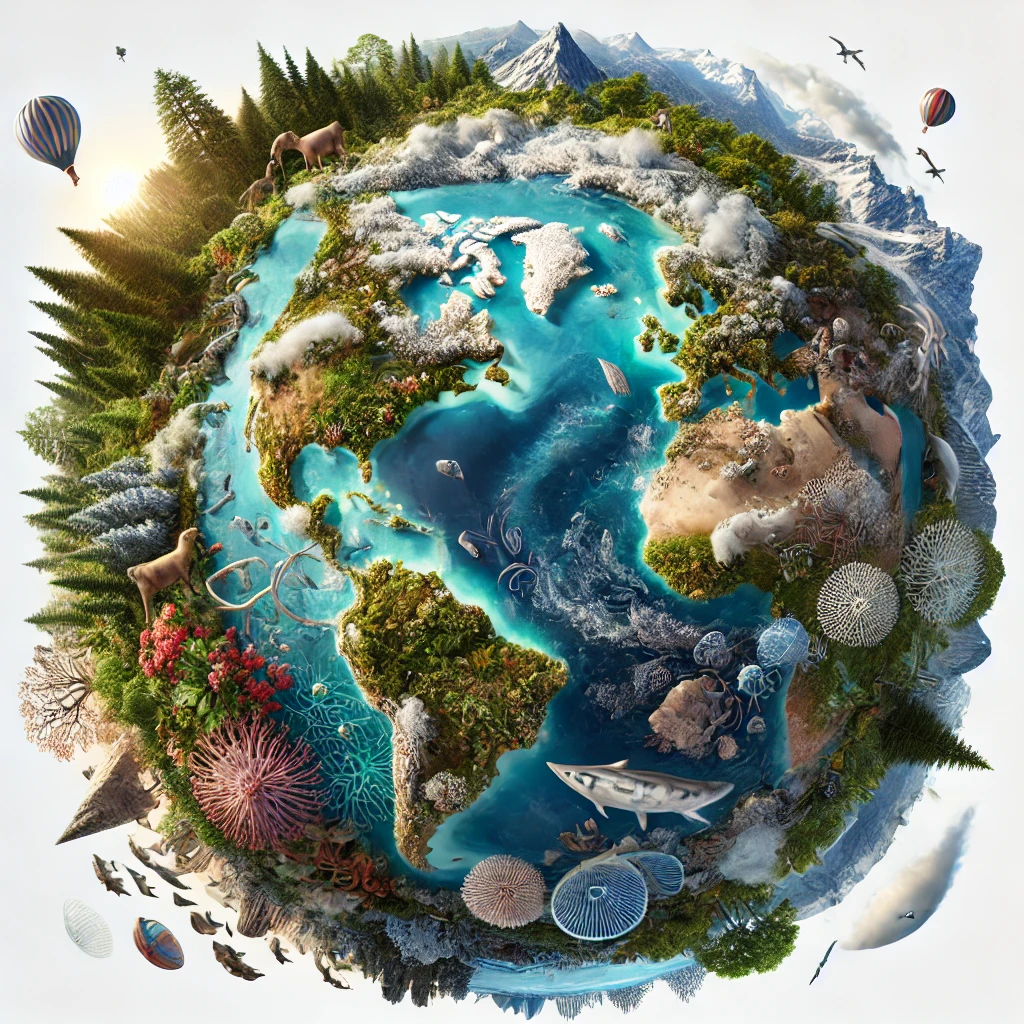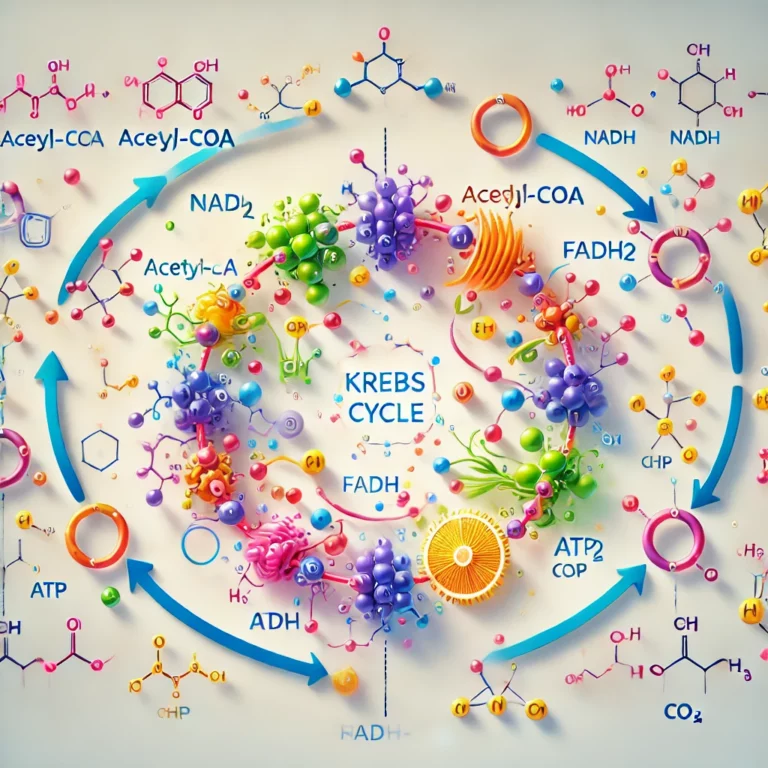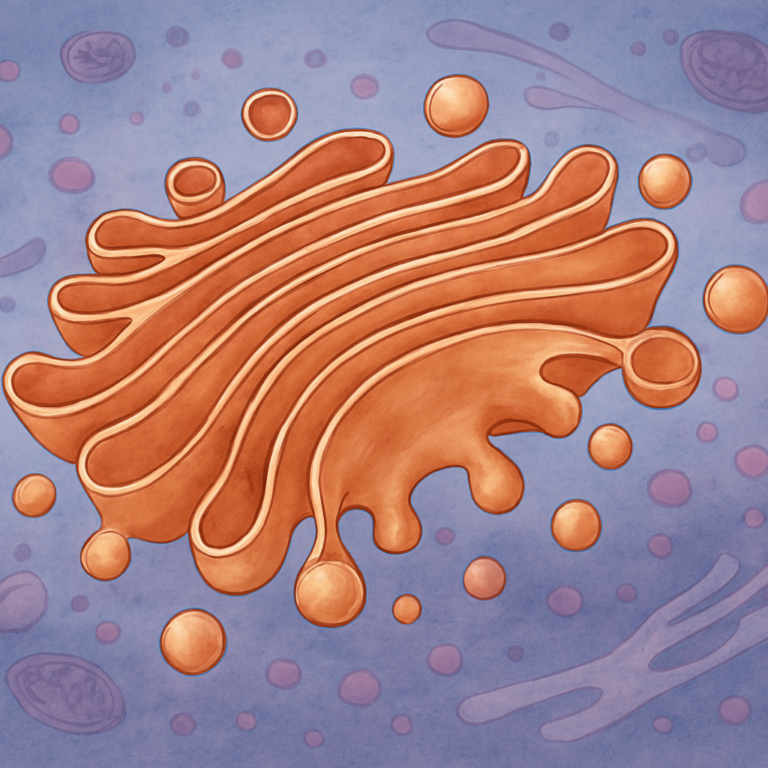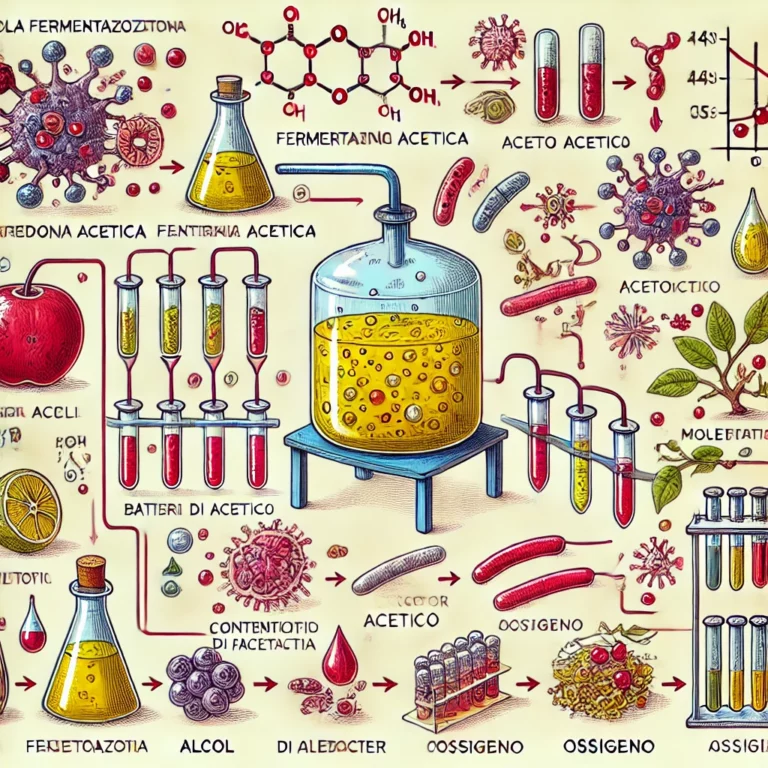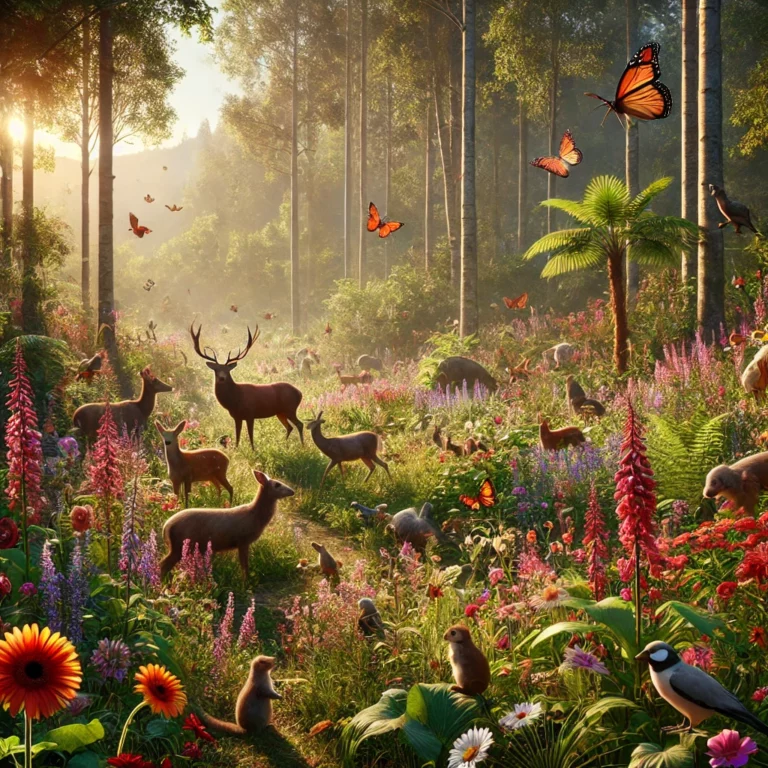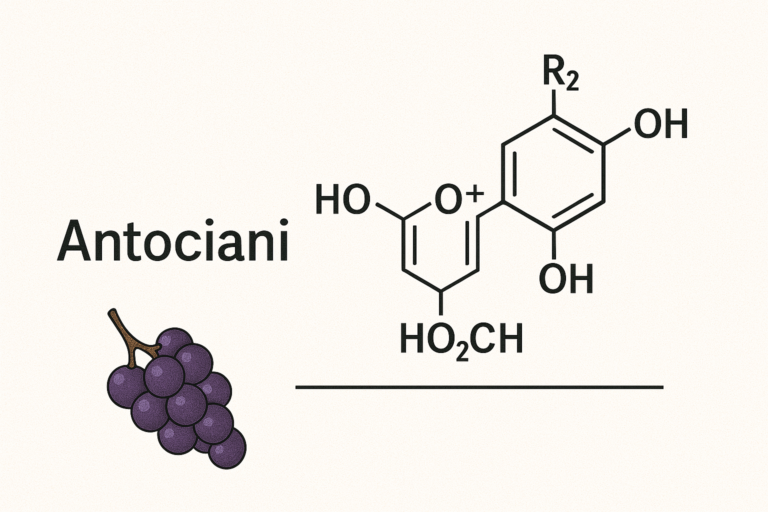Cari amici, immaginate di trovarvi di fronte a un’immensa orchestra. Migliaia di strumenti, ognuno con la sua voce, il suo timbro, la sua melodia. Un concerto magnifico, in cui ogni nota contribuisce a creare un’armonia straordinaria. Questa, amici miei, è la biodiversità del nostro pianeta. Ogni creatura, dai grandi mammiferi ai minuscoli insetti, dai fiori più rari ai licheni più comuni, è un musicista essenziale in questa sinfonia della vita.
Ma cosa accadrebbe se, improvvisamente, alcuni strumenti iniziassero a tacere? Se le percussioni si smorzassero, i fiati si spegnessero, gli archi si interrompessero? L’armonia si spezzerebbe, il concerto perderebbe la sua magia, la sua forza, la sua vitalità.
È quello che sta accadendo oggi, amici miei. La biodiversità, questo tesoro inestimabile, si sta impoverendo a un ritmo allarmante. Come ci ricorda il Living Planet Report 2022 del WWF, le popolazioni di specie vertebrate monitorate sono diminuite in media del 69% dal 1970. Pensate, in meno di una vita umana, abbiamo perso più della metà degli animali selvatici! Specie animali e vegetali scompaiono ogni giorno, come stelle che si spengono nel cielo. E con ogni specie che si estingue, perdiamo non solo una forma di vita unica e irripetibile, ma anche un tassello fondamentale dell’equilibrio del nostro pianeta.
La biodiversità, non dimentichiamolo, è alla base di tutto. È la rete invisibile che collega ogni essere vivente, garantendo la sopravvivenza della vita stessa. È grazie alla biodiversità che abbiamo aria pulita da respirare, acqua da bere, cibo da mangiare. È grazie alla biodiversità che la natura si rigenera, si adatta, si difende.
Pensate alle api, instancabili impollinatrici, che permettono ai fiori di trasformarsi in frutti. Sapevate che, secondo uno studio pubblicato su Science, la produzione agricola globale dipendente dagli impollinatori è diminuita del 3-5% negli ultimi anni a causa del loro declino? Pensate alle foreste, polmoni verdi del pianeta, che assorbono l’anidride carbonica e rilasciano ossigeno. Purtroppo, la deforestazione continua a un ritmo allarmante. Il Global Forest Watch riporta che nel 2022 abbiamo perso 11,1 milioni di ettari di foreste tropicali, un’area grande quanto il Portogallo! Pensate ai microrganismi, invisibili ma fondamentali, che decompongono la materia organica e rendono fertile il suolo.
Ogni specie, per quanto piccola o insignificante possa sembrare, ha un ruolo da svolgere, un compito da portare a termine. E quando una specie scompare, è come se si spezzasse un ingranaggio in un meccanismo complesso. Le conseguenze possono essere imprevedibili, a volte catastrofiche.
Purtroppo, amici miei, siamo noi i principali responsabili di questa perdita di biodiversità. La deforestazione, l’inquinamento, il cambiamento climatico, lo sfruttamento eccessivo delle risorse naturali: sono tutte attività umane che stanno mettendo a dura prova la vita sul nostro pianeta. Un recente articolo pubblicato su Nature mette in luce come l’intensificazione dell’agricoltura sia una delle principali cause della perdita di biodiversità, a causa dell’uso massiccio di pesticidi, della distruzione degli habitat e della monocultura.
Ma non tutto è perduto. Possiamo ancora invertire la rotta, possiamo ancora salvare la nostra orchestra, possiamo ancora far risuonare la sinfonia della vita. Come?
Innanzitutto, dobbiamo prendere coscienza del problema, capire che la biodiversità non è un lusso, ma una necessità. Dobbiamo imparare a rispettare la natura, a convivere con essa in armonia, a proteggerla come il bene più prezioso che abbiamo.
Dobbiamo ridurre il nostro impatto sull’ambiente, consumare meno, inquinare meno, sprecare meno. Dobbiamo scegliere energie rinnovabili, promuovere l’agricoltura sostenibile, proteggere gli habitat naturali. A questo proposito, è incoraggiante vedere che la COP15 sulla biodiversità tenutasi a Montreal nel dicembre 2022 ha portato all’adozione del Global Biodiversity Framework, un accordo storico che impegna i Paesi a proteggere il 30% del pianeta entro il 2030.
Dobbiamo educare le nuove generazioni al rispetto per la natura, trasmettere loro l’amore per la bellezza, la meraviglia per la diversità, la consapevolezza dell’interdipendenza tra tutti gli esseri viventi.
Amici miei, il futuro del nostro pianeta è nelle nostre mani. Scegliamo di essere custodi della vita, custodi della biodiversità. Scegliamo di lasciare alle future generazioni un mondo ricco, vibrante, armonioso. Un mondo in cui la musica della vita continui a suonare, forte e chiara, per millenni a venire.
Riferimenti bibliografici
- Allen T, Murray KA, Zambrana-Torrelio C, et al. 2017. Global hotspots and correlates of emerging zoonotic diseases. Nat Commun 8:1–10
- Anderson BJ, Akcakaya HR, Araujo MB, et al. 2009. Dynamics of range margins for metapopulations under climate change. Proceedings of the Royal Society B-Biological Sciences 276:1415–1420
- Anonymous. 2020a. COVID-19: protecting health-care workers. Lancet 395:922.
- Anonymous. 2020b. Ebola in DR Congo: getting the job done. Lancet 395:922
- Anonymous. 2021. Special Issue. Global decline in the Anthropocene. Proc Natl Acad Sci, USA 118: No 2
- Anthony SJ, Epstein JH, Murray KA, et al. 2013. A strategy to estimate unknown viral diversity in mammals. MBio 4:e00598–e1513
- Aquilera, R, Curringham TW, Gershunov A, et al. 2021. Wildfire smoke impacts respiratory health more than fine particles from other sources: observational evidence from Southern California. Nat Commun.
- AR6 Climate Change. 2021. The sixth assessment report on climate change. IPCC, Geneva.
- Auliya M, Garcı́a-Moreno J, Schmidt BR, et al. 2016. The global amphibian trade flows through Europe: the need for enforcing and improving legislation. Biodivers Conserv.
- Baillie, JEM, Hilton-Taylor, C, Stuart, SN. 2004. 2004 IUCN Red List of Threatened Species. Assessment. IUCN; Gland, Switzerland
- Bakkenes M, Alkemade JMR, Ihle F, et al. 2002. Assessing effects of forecasted climate change on the diversity and distribution of European higher plants for 2050. Global Change Biology 8:390–407
- Barnosky AD, Matzke N, Tomiya S, et al. 2011. Has the Earth’s sixth mass extinction already arrived? Nature 471:51–57
- Bascompte J. 2009. Disentangling the Web of Life. Science 325:416–419
- Beckage B, Osborne B, Gavin DG, et al. 2008. A rapid upward shift of a forest ecotone during 40 years of warming in the Green Mountains of Vermont. Proc. Natl. Acad. Sci. USA 105, 4197–4202
- Beckman NG, Aslan CE, Rogers HS. 2020. The role of seed dispersal in plant populations: perspectives and advances in a changing world. AoB Plants.
- Bell G, Gonzalez A. 2009. Evolutionary rescue can prevent extinction following environmental change. Ecology Letters 12:942–948
- Bellard, C, Leclerc, C, Courchamp, F. 2013. Impact of sea level rise on the 10 insular biodiversity hotspots. Global Ecol. Biogeogr.
- Bernardo-Cravo A, Schmeller DS, Chatzinotas A, et al. 2020. Environmental factors and host microbiomes shape host–pathogen dynamics. Trends Parasitol 36:29–36
- Biggs R, Simons H, Bakkenes M, et al. 2008. Scenarios of biodiversity loss in southern Africa in the 21st century. Global Environmental Change-Human and Policy Dimensions 18:296–309
- Blehert DS, Hicks AC, Behr M, et al. 2009. Bat white-nose syndrome: an emerging fungal pathogen? Science 323:227
- Bloom AJ, Plant RC. 2021. Wheat grain yield decreased over the past 35 years, but protein content did not change. J. Exptl. Bot. 72, 6811–6821
- Bonar, SA. 2021. More than 111 aquatic-science societies sound climate alarm. Nature 589, 352
- Botkin DB, Saxe H, Araujo MB, et al. 2007. Forecasting the effects of global warming on biodiversity. Bioscience 57:227–236
- Bradley BA, Blumenthal DM, Wilcove DS, et al. 2010. Predicting plant invasions in an era of global change. Trends in Ecology & Evolution 25:310–318
- BrainyQuote.com. 2019. [online]. BrainyMedia Inc.
- Bras, TA, Seixas, J, Nuno, C, et al. 2021. Severity of drought and heatwave crop losses tripled over the last five decades in Europe. Environ. Res. Lett.
- Bray RS. 2004. Armies of pestilence: the impact of disease on history. James Clarke & Co., Cambridge
- Bridgewater P, Loyau A, Schmeller DS. 2019. The seventh plenary of the intergovernmental platform for biodiversity and ecosystem services (IPBES-7): a global assessment and a reshaping of IPBES. Bio-divers Conserv 28:2457–2461
- Brook BW, Akcakaya HR, Keith DA, et al. 2009. Integrating bioclimate with population models to improve forecasts of species extinctions under climate change. Biology Letters 5:723–725
- Brook BW, Sodhi NS, Bradshaw CJA. 2008. Synergies among extinction drivers under global change. Trends in Ecology & Evolution 23:453–460
- Campbell, A, Kapos, V, Scharlemann, JPW, et al. 2009. Review of the Literature on the Links between Biodiversity and Climate Change: Impacts, Adaptation and Mitigation. In: Diversity SotCoB., editor. CBD Technical Series n°42. Secretariat of the Convention on Biological Diversity; Montreal
- Cardinale BJ, Duffy JE, Gonzalez A, et al. 2012. Biodiversity loss and its impact on humanity. Nature 486(7401):59
- Carnaval AC, Hickerson MJ, Haddad CFB, et al. 2009. Stability Predicts Genetic Diversity in the Brazilian Atlantic Forest Hotspot. Science 323:785–789
- Ceballos, G, Ehrlich, PP, Barnosky, AD, et al. 2015. Accelerated modern human-induced species losses: Entering the sixth mass extinction. Sci. Adv. 1, e1400253
- Centre for Biological Diversity. 2013. Deadly Waters: How Rising Seas Threaten 233 Endangered Species.
- Chang J. 2020. China’s legal response to trafficking in wild animals: the relationship between International Treaties and Chinese Law. Studies in global animal law. Springer, Berlin, pp 71–79
- Chevin LM, Lande R, Mace GM. 2010. Adaptation, plasticity, and extinction in a changing environment: towards a predictive theory. Evolutionary Applications 3:1–13
- Cleland, EE, Chuine, I, Menzel, A, et al. 2007. Shifting plant phenology in response to global change. Trends Ecol. Evol. 22, 357–365
- Cragg GM, Newman DJ. 2001. Natural product drug discovery in the next millennium. Pharmaceutical biology 39(sup1):8-17
- Cragg GM, Newman DJ. 2005. Biodiversity: A continuing source of novel drug leads. Pure and applied chemistry 77(1):7-24
- Dale VH, Brown S, Hagen SC, et al. 2010. Bioenergy and land use change. GCB Bioenergy
- Dawson TP, Jackson ST, House JI, et al. 2011. Beyond Predictions: Biodiversity Conservation in a Changing Climate. Science 332:53–58
- De Vries RP, Peng W, Grant OC, et al. 2017. Three mutations switch H7N9 influenza to human-type receptor specificity. PLoS Pathog 13:1006390
- Despommier D, Ellis B, Wilcox B. 2006. The role of ecotones in emerging infectious diseases. EcoHealth 3:281–289
- Destoumieux-Garzón D, Mavingui P, Boetsch G, et al. 2018. The one health concept: 10 years old and a long road ahead. Front Vet Sci.
- Deutsch, CA, Tewksbury, JJ, Tigchelaar, M, et al. 2018. Increase in crop losses to insect pests in a warming climate. Science 361, 916–919
- Devictor V, Mouillot D, Meynard C, et al. 2010. Spatial mismatch and congruence between taxonomic, phylogenetic and functional diversity: the need for integrative conservation strategies in a changing world. Ecology Letters 13:1030–1040
- Dias DA, Urban S, Roessner U. 2012. A historical overview of natural products in drug discovery. Metabolites 2(2):303-36
- Dickman, CR, Doherty, TS, Glen, AS, et al. 2016. Invasive predators and global biodiversity loss. Proc Natl Acad Sci U S A 113(40):11261-11265
- Dillon ME, Wang G, Huey RB. 2010. Global metabolic impacts of recent climate warming. Nature 467:704–706
- Di Marco M, Baker ML, Daszak P, et al. 2020. Opinion: sustainable development must account for pandemic risk. Proc Natl Acad Sci USA 117:3888–3892
- Dirzo R, Raven PH. 2003. Global state of biodiversity and loss. Ann. Rev. Environ. Res. 28, 137–167
- Doak DF, Morris WF. 2010. Demographic compensation and tipping points in climate-induced range shifts. Nature 467:959–962
- Duffus A, Cunningham AA. 2010. Major disease threats to European amphibians. Herpetol J 20:117–127
- Dunnell, KL, Travers, SE. 2011. Shifts in the flowering phenology of the northern Great Plains: patterns over 100 years. Am. J. Bot. 98, 935–945
- Elena, O, Matthew, E-S, Matea, O, et al. 2020. IUCN World Heritage Outlook 3. In: A conservation assessment of all natural World Heritage sites. IUCN, Gland
- Esteban GF, Finlay BJ. 2010. Conservation work is incomplete without cryptic biodiversity. Nature 463:293–293
- Fisher MC, Garner TWJ, Walker SF. 2009. Global emergence of Batrachochytrium dendrobatidis and amphibian chytridiomycosis in space, time and host. Annu Rev Microbiol.
- Fisher MC, Henk DA, Briggs CJ, et al. 2012. Emerging fungal threats to animal, plant and ecosystem health. Nature 484:186–194
- Fisher, MJ, Rao, IM, Ayarza, MA, et al. 1994. Carbon storage by introduced deep-rooted grasses in the South American Savannas. Nature 371, 236–238
- Foden, W, Mace, G, Vié, J-C, et al. 2008. Species susceptibility to climate change impacts. The 2008 Review of the IUCN Red List of Threatened Species. IUCN; Gland, Switzerland
- Forrest, JRK, Thomson, JD. 2011. An examination of synchrony between insect emergence and flowering in the Rocky Mountain meadows. Ecol. Monogr. 81, 469–491
- Fricke, EC, Ordonez, A, Rogers, HS, et al. 2022. The effects of defaunation on plants’ capacity to track climate change. Science 375, 210–214
- Gaira, KS, Rawal, R, Rawat, B, et al. 2014. Impact of climate change on the flowering of Rhododendron arboreum in central Himalaya, India. Curr. Sci. 106, 1735–1738
- Gallien L, Engler R, Albert CH, et al. 2010. Niche conservatism in an era of climate change. Ecology Letters 13:408–421
- Gerard, M, Vanderplanck, M, Wood, T, et al. 2020. Global warming and plant-pollinator mismatches. Emerg. Top. Life Sci. 4, 77–86
- Getirana, A, Libonati, R, Cataldi, M. 2021. Brazil is in water crisis—it needs a drought plan. Nature 600, 218–220
- Gichangi, EM, Njarui, DMG, Gatheru, M. 2017. Plant shoots and roots biomass of Brachiaria grasses and their effect on soil carbon in the semi-arid tropics of Kenya. Trop. Subtrop. Agroecosyst. 20, 65–74
- Gloria-Soria A, Ayala D, Bheecarry A, et al. 2016. Global genetic diversity of Aedes aegypti. Mol Ecol 25:5377–5395
- Gordo, O, Sanz, JJ. 2005. Phenology and climate change: a long-term study in a Mediterranean locality. Oecologia 146, 484–495
- Grabherr G, Gottfried M, Pauli H. 1994. Climate effects on mountain plants. Nature 369, 448
- Grinsted A, Moore JC, Jevrejava S. 2009. Reconstructing sea level from paleo and projected temperatures 200 to 2100 AD. Climate dynamic.
- Habibullah, MS, Din, BH, Tan, SH, et al. 2022. Impact of climate change on biodiversity loss: global evidence. Environ Sci Pollut Res Int 29(1):1073-1086
- Haldane JB. 1932. The causes of evolution (reprint 1990). Princeton University Press, Princeton
- Hannah L, Midgley G, Andelman S, et al. 2007. Protected area needs in a changing climate. Frontiers in Ecology and the Environment 5:131–138
- Hansen LJ, Hoffman J, Slaymaker D. 2010. Climate Change and Biodiversity: A Review of Current Issues. Island Press; Washington DC, USA
- Hausfather Z, Drake HF, Abbott T, et al. 2019. Evaluating the performance of past climate model projections. Geophys. Res. Lett.
- Hawksworth DL, Dentinger BTM. 2013. Antibiotics: relax UK import rule on fungi. Nature 496:169–169
- He F, Hubbell SP. 2011. Species-area relationships always overestimate extinction rates from habitat loss. Nature 473:368–371
- Heinrich B. 1979. Keeping a cool head: honeybee thermoregulation. Science 205, 1269–1271
- Heywood, VH. 2017. Plant conservation in the Anthropocene: challenges and future prospects. Plant Divers. 39, 314–330
- Hoegh-Guldberg, O, Poloczanska, ES, Skirving, W, et al. 2017. Coral Reef Ecosystems under climate change and ocean acidification. Front. Mar. Sci. 4, 158
- Howden SM, Soussana JF, Tubiello FN, et al. 2007. Adapting agriculture to climate change. PNAS 104:19691-19696
- Hua, F, Bruijnzeel, LA, Meli, P, et al. 2022. The biodiversity and ecosystem service contributions and trade-offs of forest restoration approaches. Science
- Hughes L. 2003. Climate change and Australia: Trends, projections and impacts. Austral Ecology 28:423-443
- Hughes, TP, Kerry, TJ, Baird, AH, et al. 2018. Global warming transforms coral reef assemblages. Nature 556, 492–496
- Immerzeel, WW, Lutz, AF, Andrade, M, et al. 2020. Importance and vulnerability of the world’s water towers. Nature 577, 364–369
- Indian State Forest Report. 2019. Forest Survey of India.
- IPBES. 2019. The intergovernmental science-policy platform on biodiversity and ecosystem services. In: Sustainable development goals. IPBES, Bonn
- IPCC. 2005. IPCC special report on carbon dioxidecapture and storage.
- Jägermeyr, J, Müller, C, Ruane, AC, et al. 2021. Climate impacts on global agriculture emerge earlier in new generation of climate and crop models. Nat. Food
- Jetz W, Wilcove DS, Dobson AP. 2007. Projected impacts of climate and land-use change on the global diversity of birds. Plos Biology 5:1211–1219
- Jones KE, Patel NG, Levy MA, et al. 2008. Global trends in emerging infectious diseases. Nature 451:990–993
- Jose B. 2018. Nipah: The deadly menace. J Acad Clin Microbiol 20:66–73
- Keith DA, Akçakaya HR, Thuiller W, et al. 2008. Predicting extinction risks under climate change: coupling stochastic population models with dynamic bioclimate habitat models. Biology Letters 4:499–502
- Kerr, JT, Pinder, A, Galpern, P, et al. 2015. Climate impacts on bumble-bees coverage across continents. Science 349, 177–180
- Kiers ET, Palmer TM, Ives AR, et al. 2010. Mutualisms in a changing world: an evolutionary perspective. Ecology Letters 13:1459–1474
- King, O, Bhattacharya, A, Ghuffar, S, et al. 2021. Six decades of glacier mass changes around Mt. Everest are revealed by historical and contemporary Images. One Earth
- Koh LP, Dunn RR, Sodhi NS, et al. 2004. Species coextinctions and the biodiversity crisis. Science 305:1632–1634
- Kramer K, Degen B, Buschbom J, et al. 2010. Modelling exploration of the future of European beech (Fagus sylvatica L.) under climate change-Range, abundance, genetic diversity and adaptive response. Forest Ecology and Management 259:2213–2222
- Kudo, G. 2014. Vulnerability of phenological synchrony between plants and pollinators in an alpine ecosystem. Ecol. Res. 29, 571–581
- Kudo, G, Ida, TY. 2013. Early onset of spring increases the mismatch between plants and pollinators. Ecology 94, 2311–2320
- Kuussaari M, Bommarco R, Heikkinen RK, et al. 2009. Extinction debt: a challenge for biodiversity conservation. Trends in Ecology & Evolution 24:564–571
- Lafferty KD. 2009. The ecology of climate change and infectious diseases. Ecology 90:888–900
- Lam TT-Y, Shum MH-H, Zhu H-C, et al. 2020. Identifying SARS-CoV-2 related coronaviruses in Malayan pangolins. Nature
- Lapola DM, Oyama MD, Nobre CA. 2009. Exploring the range of climate biome projections for tropical South America: The role of CO2 fertilization and seasonality. Global Biogeochem. Cycles 23
- Lavergne S, Mouquet N, Thuiller W, et al. 2010. Biodiversity and Climate Change: Integrating Evolutionary and Ecological Responses of Species and Communities. Annual Review of Ecology, Evolution, and Systematics, Vol 41 41:321–350
- Lavania, UC, Lavania, S. 2009. Sequestration of atmospheric carbon into subsoil horizons through deep-rooted grasses-vetiver grass model. Curr. Sci. 97, 618–619
- Lavorel S, Grigulis K, Lamarque P, et al. 2011. Using plant functional traits to understand the landscape distribution of multiple ecosystem services. Journal of Ecology 99:135–147
- Leadley, P, Pereira, HM, Alkemade, R, et al. 2010. Biodiversity Scenarios: Projections of 21st century change in biodiversity and associated ecosystem services. In: Diversity SotCoB., editor. Secretariat of the Convention on Biological Diversity. Montreal
- Lee, E, Carrivick, JL, Quincey, DJ, et al. 2021. Accelerated mass loss of Himalayan glaciers since the little ice age. Sci. Rep. 11, 24284
- Leech, DI, Crick, HQP. 2007. Influence of climate change on the abundance, distribution and phenology of woodland bird species in temperate regions. Ibis 149(Suppl. 2), 128–145
- Leeming, J. 2021. Meet the food pioneer whose meat replacements are rocking the gravy boat. Nature 590, 176
- Lenzen, M, Moran, D, Kanemoto, K, et al. 2012. International trade drives biodiversity threats in developing nations. Nature 486, 109–112
- Lepetz V, Massot M, Schmeller DS, et al. 2009. Biodiversity monitoring some proposals to adequately study species’ responses to climate change. Biodiversity Conservation 18:3185–3203
- Levin, DA. 2019. Plant speciation in the age of climate change. Ann. Bot. 124, 769–775
- Lobell, DB, Schlenker, W, Costa-Roberts, J. 2011. Climate trends and global crop production since 1980. Science 333, 616–620
- Loss SR, Terwilliger LA, Peterson AC. 2011. Assisted colonization: Integrating conservation strategies in the face of climate change. Biological Conservation 144:92–100
- Lovejoy, TE, Hannah, L (eds.). 2005. Biodiversity and climate change: transforming the biosphere. Yale University Press, New Haven, London
- Luoto M, Heikkinen RK. 2008. Disregarding topographical heterogeneity biases species turnover assessments based on bioclimatic models. Global Change Biology 14:483–494
- Maclean IMD, Wilson RJ. 2011. Recent ecological responses to climate change support predictions of high extinction risk. Proceedings of the National Academy of Sciences of the United States of America 108:12337–12342
- Malcolm JR, Liu CR, Neilson RP, et al. 2006. Global warming and extinctions of endemic species from biodiversity hotspots. Conservation Biology 20:538–548
- Manisalidis, I, Stavropoulou, E, Stavropoulos, A, et al. 2020. Environmental and health impacts of air pollution: a review. Front. Public Health
- Maxwell, SL, Butt, N, Maron, M, et al. 2019. Conservation implications of ecological responses to extreme weather and climate events. Divers. Distrib. 25, 613–625
- McCrystall, MR, Stroeve, J, Serreze, M, et al. 2021. New climate models reveal faster and larger increases in Arctic precipitation than previously projected. Nat. Commun.
- McMahon SM, Harrison SP, Armbruster WS, et al. 2011. Improving assessment and modelling of climate change impacts on global terrestrial biodiversity. Trends in Ecology & Evolution 26:249–259
- Memmott, J, Craze, PE, Waser, NM, et al. 2007. Global warming and disruption of plant-pollinator interactions. Ecol. Lett. 10, 710–717
- Meyers LA, Bull JJ. 2002. Fighting change with change: adaptive variation in an uncertain world. Trends in Ecology & Evolution 17:551–557
- Miller-Rushing, A, Hoye, TH, Inouye, D, et al. 2010. The effects of phenological mismatches on demography. Philos. Trans. R. Soc. B 365, 3177–3186
- Mora C, Tittensor DP, Myers RA. 2007. The completeness of taxonomic compilations for assessing biodiversity loss. Ecology 88:908–915
- Murray KA, Daszak P. 2013. Human ecology in pathogenic landscapes: two hypotheses on how land use change drives viral emergence. Curr Opin Virol 3:79–83
- Musso D, Gubler DJ. 2015. Zika virus: following the path of dengue and chikungunya? Lancet 386:243–244
- Myers N, Mittermeier RA, Mittermeier CG, et al. 2000. Biodiversity hotspots for conservation priorities. Nature 403(6772):853
- Nasi R, Taber A, Van Vliet N. 2011. Empty forests, empty stomachs? Bushmeat and livelihoods in the Congo and Amazon Basins. Int For Rev 13:355–368
- Nature’s Dangerous Decline ‘Unprecedented’; Species Extinction Rates ‘Accelerating’. 2019. [Online]. United Nations
- Neergheen-Bhujun V, Awan AT, Baran Y, et al. 2017. Biodiversity, drug discovery, and the future of global health: Introducing the biodiversity to biomedicine consortium, a call to action. Journal of global health 7(2)
- Negrutiu, I, Frohlich, MW, Hamant, O. 2020. Flowering plants in the Anthropocene: a political agenda. Trends Plant. Sci. 25, 349–368
- O’Hanlon SJ, Rieux A, Farrer RA, et al. 2018. Recent Asian origin of chytrid fungi causing global amphibian declines. Science 360:621–627
- Obura, D, Gudka, M, Samoilys, M, et al. 2021. Vulnerability to collapse of coral reef ecosystems in the Western Indian Ocean. Nat. Sustain. 5, 104–113
- Organization WH. 2015. Connecting global priorities: biodiversity and human health. World Health Organization and Secretariat of the Convention on Biological…
- Ostfeld, R.S. 2009. Biodiversity loss and the rise of zoonotic pathogens. Clin Microbiol Infect 15 Suppl 1:40-3.
- Owen R. 2017. Role of human action in the spread of honey bee (Hymenoptera: Apidae) pathogens. J Econ Entomol 110:797–801
- OXFAM International. 2021. 5 natural disasters that beg for climate action.
- Pacheco, P, Mo, K, Dudley, N, et al. 2021. Deforestation fronts: drivers and responses in a changing world. WWF, Gland
- Pachetti M, Marini B, Benedetti F, et al. 2020. Emerging SARS-CoV-2 mutation hot spots include a novel RNA-dependent-RNA polymerase variant. J Transl Med 18:179
- Parmesan C. 2006. Ecological and evolutionary responses to recent climate change. Ecology Evolution 37:637–669
- Parmesan C, Duarte CM, Poloczanska E, et al. 2011. Overstretching attribution. Nature Climate Change 1
- Parmesan, C, Yohe, G. 2003. A globally coherent fingerprint of climate change impacts across natural systems. Nature 421, 37–42
- Pautasso, M. 2012. Observed impacts of climate change on terrestrial birds in Europe: an overview. Ital. J. Zool. 79, 296–314
- Pautasso M, Aas G, Queloz V, et al. 2013. European ash (Fraxinus excelsior) dieback–a conservation biology challenge. Biol Conserv 158:37–49
- Peng J, Yang H, Jiang H, et al. 2014. The origin of novel avian influenza A (H7N9) and mutation

